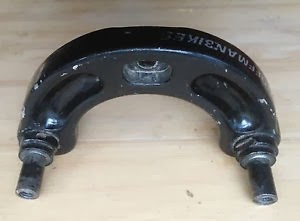Replacing a Light Switch with a PIR / Occupancy Sensor
MESSING ABOUT WITH THE WIRING IN YOUR HOUSE IS A SILLY IDEA IT COULD KILL EVERYBODY IN THE HOUSE IF THERE IS AN ELECTRICAL FIRE AND YOU COULD GET ZAPPED TOO. HIRE A QUALIFIED ELECTRICIAN TO FIT YOUR PIR / OCCUPANCY SENSOR. THE BELOW ARE NOT INSTRUCTIONS JUST RECORDED OBSERVATIONS AND AS SUCH SHOULD
NOT BE IMPLEMENTED BY THE READER IN ANY WAY SHAPE OR FORM.
Replacing a Light Switch with a PIR / Occupancy Sensor - Intro
A few months after moving house, and I have finally got round to replacing the very noisy (click, clonk) pull cord light switches in the bathrooms that wake everybody up. I opted for PIR motion sensors with adjustable "on" time, and sensors that keep the light off during daylight hours.
I purchased them from
Total Warehouse an ebay shop.
Replacing a Light Switch with a PIR / Occupancy Sensor - No Neutral
I have replaced loads of light switches before, but guess what a PIR / Occupancy Sensor is not a light switch!
Nearly all generic PIR / Occupancy Sensors require a neutral wire to operate, and nearly all light switches do not have a neutral wire. the typical light switch works by breaking the positive side of the lighting circuit, so effectivly at the switch you have 2 positive wires (and an earth wire).
Replacing a Light Switch with a PIR / Occupancy Sensor - DO NOT DO THIS
These PIRs do not have an earth connection, ie they are un-earthed. So this means the earth wire at the light switch is spare, and potentially could be used for a neutral wire. Of course there are numerous dangers with doing this, the earth wire is not insulated separately as it is not meant to be in constant use. It is also dangerous because it is not blue in colour and so future users my identify it wrongly. DO NOT DO THIS
So in theory (although I would not do this) you could swap the switch earth over to the neutral side of ceiling light rose, and then without crawling around in the loft you will have a neutral at the switch. You can check that you have the right wire by checking resistance from the switch to the rose along the chosen earth wire, it should be zero. DO NOT DO THIS
Replacing a Light Switch with a PIR / Occupancy Sensor - Solution
Hire an electrician and he . she will probably replace the switch wire with a 3 core + earth alternative, which will allow a properly insulated neutral wire to be sited at the switch.
Also there are PIR / Occupancy Sensors that do not reuqire a neutral, but these are around 10 times the price.
Replacing a Light Switch with a PIR / Occupancy Sensor - In Use
So is having a PIR / Occupancy Sensor useful. Errrr . . . .yes I guess it is, although you will need to carry a s small screwdriver around with you for a few days. The sensor switches on when you come in the room which is good, but how long it stays on for after that initial detection is set by twiddling the adjustment dials on the side of the unit.
Of course if you keep moving around then the light will stay on but if you are sitting down reading book then after a while the light will go off, a PIR would work well in say a kitchen where people are moving round allot, but in lounge I should imagine they would not be very useful. They are OK in the bathroom, on about a 2 minute delay.
Another problem with replacing light switch with a PIR is that light switches are tucked away in corners, where they can not "see" the whole room, 2 out of the 3 installed PIRs in our house had to be sited in central locations resulting in holes in the ceiling.
Illustrator Devon

.JPG)
.JPG)
.JPG)



.JPG)
.png)
.JPG)
.JPG)

.jpg)
.jpg)
.jpg)
.jpg)
.jpg)
.jpg)
.jpg)
.jpg)






.png)
.png)
.png)
